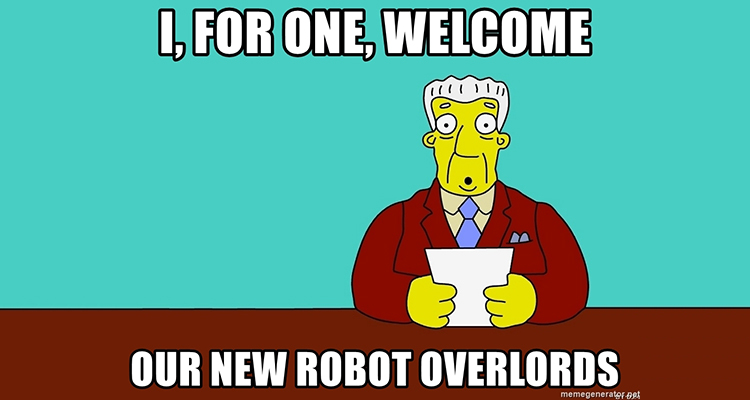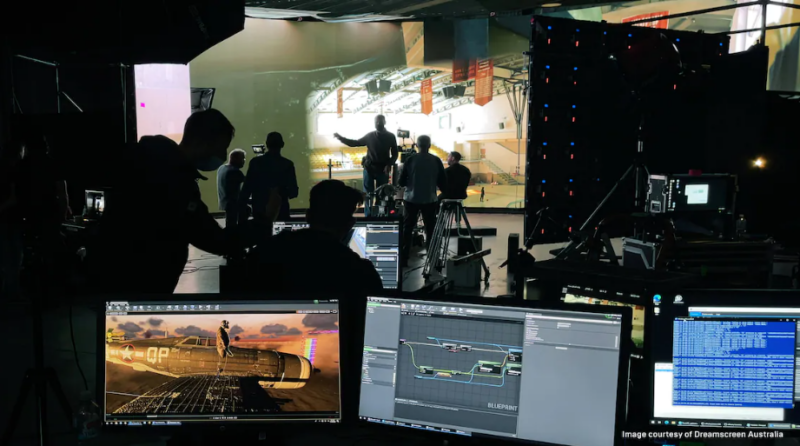The Techinator
 Last month, we talked about AI and robotics, how they were affecting our current electronics world and how they could affect the future of the audiovisual industry. Elon Musk recently pointed out that AI could take over the world, producing an unkillable AI global dictator and could literally spell the end of our species. He should know, since the presence of even primitive AI in his own products has members of our species trying to take a nap in their Tesla while it navigates rush-hour traffic. This is not just Darwin in action; we seem to be ripe for a digital overlord and evidence of this is everywhere. For instance, while our language capability devolves through our use of Twitter and SMS, AI applications write better than we do and in multiple languages. In fact, you can’t be sure who is actually writing this column, can you? Perhaps Sara Abrons has replaced me with an artificially intelligent plug-in for Microsoft Word. Perhaps such an application could even improve upon me, writing columns which were both technically and politically correct and turning them in on time.
Last month, we talked about AI and robotics, how they were affecting our current electronics world and how they could affect the future of the audiovisual industry. Elon Musk recently pointed out that AI could take over the world, producing an unkillable AI global dictator and could literally spell the end of our species. He should know, since the presence of even primitive AI in his own products has members of our species trying to take a nap in their Tesla while it navigates rush-hour traffic. This is not just Darwin in action; we seem to be ripe for a digital overlord and evidence of this is everywhere. For instance, while our language capability devolves through our use of Twitter and SMS, AI applications write better than we do and in multiple languages. In fact, you can’t be sure who is actually writing this column, can you? Perhaps Sara Abrons has replaced me with an artificially intelligent plug-in for Microsoft Word. Perhaps such an application could even improve upon me, writing columns which were both technically and politically correct and turning them in on time.
So, while I am enthusiastic about new developments in electronics and what they can do for us, I share Mr. Musk’s uneasiness about some of the potentials of unrestricted development of artificial intelligence. In fact,
I am encouraged by the movements of employees at places like Google and Microsoft to keep their companies from doing military research for AI, which could produce autonomous, artificially intelligent machines. I wonder about how those programs exist within those companies. For instance, was Microsoft’s AI weapons program codenamed “blue screen of death?” Would the Google program produce a Terminator that could time travel, so that it could return to our time and wipe out anti-AI activists? If it arrives tomorrow, will I be able to convince it that I did not write this column, and blame it on Sara and her Word plug-in?
But let’s talk about what AI and robotics could do for the audiovisual industry. In an earlier column, I mentioned that while I was working on a VR project for a large power company, I was exposed to a robot that they used to inspect underground cabling in one of the world’s largest cities. I was also interested to hear the operators of such a robot talk about the applications for artificial intelligence in such a machine. They felt that the machine would then be able to navigate its way to a break or fault in the cable all by itself and then to alert its human operator about the repair, rather than the human operator having to spend days navigating the robot through the tunnel to find the break. I pointed out that they could then equip the robot to repair the cable all on its own. Their answer: “Not unless it pays union dues.”
But I leave the question of Techinator union membership to others, since the bulk of our industry is non-union companies. There are certainly a lot of things that an AI-equipped robotic technician could do for us. It would never call in sick, never be late for a call and in fact would never go home. (Those of you who are snickering about the fact that this is already what we expect of a rental technician should know that I share your feelings). Besides that, though, the Techinator could have many of the characteristics of the T2 from the Terminator movies. Let’s look at a few of them:
- Perfect capability with languages would make it much easier to put together an international, touring show. (Or just to let it work in New York City.)
- Heads-up display technology would allow it to constantly track the most important elements of the show: the head end table, the loading dock, the restroom, the client and the lunch truck.
- Morphing capability would allow the Techinator to function as its own, self-contained set of backup equipment.
- Appearance-changing capability would allow the unit to impersonate the client, in order to authorize its own changes in the show or to stand in for any presenter who did not show up.
- A built-in laser pointer could not only help during presentations, but could vaporize hecklers anywhere in the audience.
But, seriously, we don’t need to worry about this just yet. At the current pace of technological change, it could be several months before an autonomous technician is on the market. And even longer before it decides whether it wants to work for us at all.
Hasta la vista, baby.





